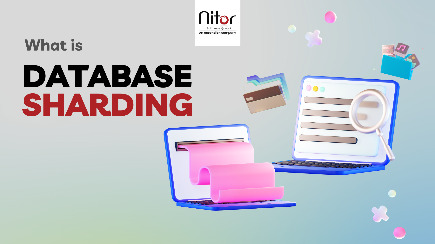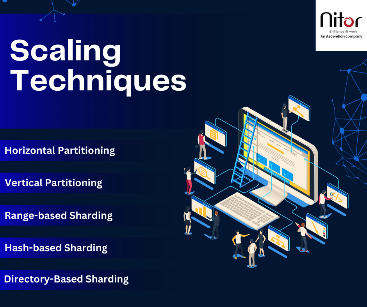#data architecture
Explore tagged Tumblr posts
Text
Data Modelling Master Class-Series | Introduction -Topic 1
https://youtu.be/L1x_BM9wWdQ
#theDataChannel @thedatachannel @datamodelling
#data modeling#data#data architecture#data analytics#data quality#enterprise data management#enterprise data warehouse#the Data Channel#data design#data architect#entity relationship#ERDs#physical data model#logical data model#data governance
2 notes
·
View notes
Text
0 notes
Text
Data Architecture: Building a Scalable Data Strategy

In an environment where data moves faster than ever, businesses need more than a tool – they need a structure. Data architecture provides the framework for understanding how data moves, grows and creates value across an organization. It’s the underlying structure for smarter decisions, seamless operations, and confident scaling read more here…
#data architecture#what is data architecture#data architecture principles#data architecture framework
0 notes
Text
What is Logical Data Modeling and Why is it important?
Learn what logical data modeling is, why it matters, and how it bridges the gap between conceptual and physical models. Check out benefits, best practices, and how tools like ER/Studio support logical data modeling for scalable, platform-independent design.
Visit us to know more: https://erstudio.com/blog/what-is-logical-data-modeling-and-why-is-it-important/
1 note
·
View note
Text
Hold up, folks! You’re going to love these! They are amazing, beautiful, classy, dazzling and eminently readable. And that’s an absolute understatement of Mel Brook’s proportions.
As a writer, I have a number of works to my name. This post highlights some of these works and offers a quick link to the Amazon platform, where you can get your editions.
#AI#Analytics#biden#books#bush#Business#clinton#data#data architecture#empire#grand-strategy#hegemony#honor#honour#information#Martyn Jones#obama#pnac#Politics#reagan#real estate#technology#trump#war#writing
0 notes
Text
Data Fabric - Reshaping Master Data Management
Data fabric is revolutionizing how organizations approach master data management (MDM). This innovative architecture fosters a unified and automated ecosystem for data governance, integration, and accessibility. However, it’s crucial to understand how data fabric impacts MDM strategies, not just the benefits. A Boon for MDMEnhanced Governance and Quality: Streamlined Integration: Agility and…
0 notes
Text
What is Data Architecture? Overview and Best Practices

Data architecture is the blueprint for managing data within an organization. It defines data sources, storage, integration, and governance to ensure consistency, security, and accessibility. Best practices include clear data modeling, scalability, compliance adherence, and efficient data flow design. A strong data architecture supports analytics, decision-making, and digital transformation, enhancing business efficiency and innovation.
0 notes
Text
Data Engineering Services Explained: What Lies Ahead for the Industry
In an era where data shapes every aspect of business decision-making, organizations are turning to data engineering to harness its full potential. As data volumes and complexities escalate, the demand for specialized data engineering services has surged. This article delves into the core components of data engineering services and offers insights into the evolving future of this critical field.

What are Data Engineering Services?
Data engineering involves the design, construction, and maintenance of systems and infrastructure that allow for the collection, storage, processing, and analysis of data. Data engineering services encompass a variety of tasks and functions that ensure data is accessible, reliable, and usable for data scientists, analysts, and business stakeholders. Key components of data engineering services include:
1. Data Architecture
Data engineers are responsible for designing data architectures that define how data is collected, stored, and accessed. This includes selecting appropriate databases, data lakes, and data warehouses to optimize performance and scalability.
2. Data Integration
Data often comes from multiple sources, including transactional systems, external APIs, and sensor data. Data engineering services involve creating ETL (Extract, Transform, Load) processes that integrate data from these various sources into a unified format.
3. Data Quality and Governance
Ensuring data quality is critical for accurate analysis. Data engineers implement data validation and cleansing processes to identify and rectify errors. They also establish governance frameworks to maintain data integrity and compliance with regulations.
4. Data Pipeline Development
Data pipelines automate the flow of data from its source to storage and processing systems. Data engineering services focus on building efficient pipelines that can handle large volumes of data while ensuring minimal latency.
5. Performance Optimization
As organizations scale, performance becomes a crucial consideration. Data engineers optimize databases and pipelines for speed and efficiency, enabling faster data retrieval and processing.
6. Collaboration with Data Teams
Data engineers work closely with data scientists, analysts, and other stakeholders to understand their data needs. This collaboration ensures that the data infrastructure supports analytical initiatives effectively.
The Future of Data Engineering
As the field of data engineering evolves, several trends are shaping its future:
1. Increased Automation
Automation is set to revolutionize data engineering. Tools and platforms are emerging that automate repetitive tasks such as data cleansing, pipeline management, and monitoring. This will allow data engineers to focus on more strategic initiatives rather than manual processes.
2. Real-time Data Processing
With the rise of IoT devices and streaming applications, the demand for real-time data processing is growing. Future data engineering services will increasingly incorporate technologies like Apache Kafka and Apache Flink to facilitate real-time data ingestion and analytics.
3. Cloud-based Solutions
Cloud computing is becoming the norm for data storage and processing. Data engineering services will continue to leverage cloud platforms like AWS, Google Cloud, and Azure, offering greater scalability, flexibility, and cost-effectiveness.
4. DataOps
DataOps is an emerging discipline that applies agile methodologies to data management. It emphasizes collaboration, continuous integration, and automation in data pipelines. As organizations adopt DataOps, the role of data engineers will shift toward ensuring seamless collaboration across data teams.
5. Focus on Data Security and Privacy
With growing concerns about data security and privacy, data engineers will play a vital role in implementing security measures and ensuring compliance with regulations like GDPR and CCPA. Future services will prioritize data protection as a foundational element of data architecture.
6. Integration of AI and Machine Learning
Data engineering will increasingly intersect with artificial intelligence and machine learning. Data engineers will need to build infrastructures that support machine learning models, ensuring they have access to clean, structured data for training and inference.
Conclusion
Data engineering services are essential for organizations seeking to harness the power of data. As technology continues to advance, the future of data engineering promises to be dynamic and transformative. With a focus on automation, real-time processing, cloud solutions, and security, data engineers will be at the forefront of driving data strategy and innovation. Embracing these trends will enable organizations to make informed decisions, optimize operations, and ultimately gain a competitive edge in their respective industries.
#Data Engineering Services#Data Security#Data Privacy#Future of Data Engineering#Data Architecture#Data Governance
0 notes
Text

Welcome to the digital era, where data reigns as the new currency.
In modern information technology, the term “Big Data” has surged to the forefront, embodying the exponential growth and availability of data in today’s digital age. This influx of data encompasses vast volumes, generated at unprecedented speeds and with diverse varieties, presenting both challenges and opportunities across industries worldwide.
To unlock the true potential of big data, businesses need to address several critical areas like #BigDataCollection and #DataIntegration, #DataStorage and Management, #DataAnalysis and #DataAnalytics, #DataPrivacy and #DataSecurity, Innovation and Product Development, Operational Efficiency and Cost Optimization. Here at SBSC we recognize the transformative power of #bigdata and empower businesses to unlock its potential through a comprehensive suite of services: #DataStrategy and #Consultation: SBSC’s Tailored advisory services help businesses define their Big Data goals, develop a roadmap, and align data initiatives with strategic objectives.
#DataArchitecture and #DataIntegration: We Design and implementation of scalable, robust data architectures that support data ingestion, storage, and integration from diverse sources. #DataWarehousing and Management: SBSC provides Solutions for setting up data warehouses or data lakes, including management of structured and unstructured data, ensuring accessibility and security. Data Analytics and Business Intelligence: Advanced analytics capabilities leveraging machine learning, AI algorithms, and statistical models to derive actionable insights and support decision-making.
#DataVisualization and Reporting: Creation of intuitive dashboards and reports that visualize key insights and performance metrics, enabling stakeholders to interpret data effectively. #CloudServices and Infrastructure: Leveraging #cloudplatforms for scalability, flexibility, and cost-effectiveness in managing Big Data environments, including migration and optimization services Continuous Improvement and Adaptation: Establishment of feedback loops and metrics to measure the impact of Big Data initiatives, fostering a culture of continuous improvement and adaptation.
By offering a comprehensive suite of services in these areas, SBSC helps businesses to harness the power of Big Data to drive innovation, improve operational efficiency, enhance customer experiences, and achieve sustainable growth in today’s competitive landscape
Contact SBSC to know the right services you need for your Business
Email: [email protected] Website:https://www.sbsc.com
#Big Data Collection#big data#Cloud Services Consultation#Data Warehousing#Data Strategy#Data Storage#Data Security#Data Privacy#Data Integration#Data Architecture#Data Analysis
0 notes
Text
Data Management Solution - How It is Beneficial for Successful Business
What Is Data Management?
The process of gathering, arranging, safeguarding, and preserving an organization's data so that it can be examined for business choices is known as data management. Data management solutions are crucial for making sense of the enormous amounts of data that enterprises are creating and consuming at previously unheard-of speeds. The most advanced data management software available today makes sure that trustworthy, current data is always used to inform choices. The program facilitates the speedy discovery of the data required for analysis by helping with data preparation, cataloguing, search, governance, and more.
The Significance of Data Management
In order to use efficient data analysis at scale and gain valuable insights that benefit both your consumers and your business, data management is an essential first step. People from all throughout a company can locate and access reliable data for their inquiries with the help of efficient data management.
An Efficient Data Management Solution Has the Following Benefits:
· Visibility- Data management can improve the visibility of your company's data assets, enabling staff members to locate the necessary data more easily and confidently. It can also help individuals become more organized and productive.
· Dependability- Data management reduces the possibility of errors by defining usage procedures and guidelines. Businesses can react to changes in the market and client needs more quickly when they have access to accurate and current data.
· Safety & Security- Through the use of authentication and encryption technologies, data management shields your company and its personnel from data breaches, thefts, and losses. Robust data security guarantees that crucial firm data is preserved and retrieved in the event that the primary source is unavailable.
· Scalability- With repeatable procedures to maintain data and metadata current and minimize needless duplicate expenses, data management enables enterprises to increase data and usage situations efficiently.
T/DG Data Management Solution has the latest tools and platform capabilities- like from organizing the data with best governance practices to storing, processing, integrating and cleansing the data and final consumption. The Digital Group Data Management includes Data Architecture, Data Governance, and Data Quality.
T/DG provides a holistic Data Architecture as a Service.
T/DG’s data management solution expertise in handling and refining enormous amounts of data and are the industry experts in Data Governance.
The ultimate goal of T/DG's Data Quality management software is not only improve the quality of data but to create the desired business outcome leading to success.
0 notes
Text
Understanding Database Sharding
Imagine you have a library with thousands of books, and finding a specific one becomes time-consuming. To speed things up, you decide to split the collection into smaller sections based on genres, making it quicker to locate any book.
Similarly, Database Sharding divides a large database into smaller, more manageable pieces to improve performance and scalability.

Fig: Database Sharding Banner Image
What is a Sharding Database
Database sharding is like storing a huge database across several machines. Imagine one server trying to handle all the data—it can only do so much before it starts slowing down. By splitting the data into smaller chunks, or shards, and storing these across multiple servers, we can manage and process large amounts of data more efficiently.
As an application grows, more users and data can turn the database into a bottleneck, slowing everything down and frustrating users. Sharding also helps by allowing parallel processing of these smaller datasets, keeping things running smoothly even as demand increases.
Scaling Techniques in Database Sharding
Scaling database sharding involves several techniques to ensure efficient management and distribution of data. Here are some key methods:

Horizontal Partitioning
This technique involves splitting the data across multiple servers based on a sharding key, such as user ID or geographic region. Each server, or shard, contains a subset of the overall data. This approach allows the system to scale out by adding more servers, thereby distributing the load and improving performance and reliability.
Vertical Partitioning
This technique divides the database into smaller tables, each stored on different servers. Each server handles a specific aspect of the application, such as user profiles, transactions, or product details. By separating the data based on functionality, vertical partitioning can improve query performance and make it easier to manage and scale specific parts of the application independently.
Range-Based Sharding
Distributes data management based on a continuous range of values. For example, user IDs 1-1000 on one shard, and 1001-2000 on another.
Hash-Based Sharding
Uses a hash function on the sharding key to evenly distribute data across shards. This helps avoid uneven data distribution.
Directory-Based Sharding
Maintains a lookup table or directory that maps each data item to its corresponding shard. This allows flexible and dynamic distribution of data.
Each technique has its advantages and is chosen based on the specific needs and growth patterns of the application.
Benefits of Database Sharding
Database sharding offers several benefits:
Improved Performance: By distributing the data across multiple servers, each server handles a smaller subset of the data, reducing the load and improving query response times.
Scalability: Sharding allows horizontal scaling, meaning you can add more servers to handle the increased load, making it easier to scale the database as the application grows.
Increased Availability: With data distributed across multiple servers, the system can continue to operate even if one shard fails. This redundancy enhances the overall availability and reliability of the application.
Efficient Resource Utilization: Different shards can be optimized for specific workloads, allowing better use of hardware resources. For instance, high-traffic shards can be allocated more resources, while less busy shards use fewer resources.
Reduced Maintenance: Smaller databases are easier to back up, restore, and maintain. Sharding breaks down the database into more manageable pieces, simplifying administrative tasks.
Factors to consider before Sharding
Before deciding to shard your database, consider the following factors:
Database Size: Sharding is typically suitable for large databases that have outgrown the capacity of a single server.
Traffic Patterns: If your database experiences uneven traffic patterns, sharding can help balance the load.
Growth Projections: If significant future scaling is anticipated, sharding can be a beneficial strategy.
Complexity: Sharding introduces additional complexity to your database architecture and requires careful planning and ongoing maintenance.
Cost: Sharding can be costly due to the need for extra hardware resources and infrastructure to support multiple servers.
So, database sharding offers both advantages and challenges, and it is important to determine if it aligns with your application’s requirements.
To know more about database management, reach out to us at Nitor Infotech.
#Database Sharding#Nitor Infotech#software development company#database management#big data#data modeling#data architecture#software services
0 notes
Text
Building the Foundation for Data-driven Success: IntelliData Labs' Expert Data Architecture Services
IntelliData Labs offers expert data architecture services designed to lay the foundation for data-driven success. Our experienced architects work closely with organizations to design robust and scalable data architectures that align with business objectives and support future growth. From data modeling to infrastructure design, we provide comprehensive solutions tailored to your unique requirements, enabling you to effectively manage, analyze, and derive insights from your data assets.
0 notes
Text
Data Fabric vs Data Lake: Selecting the appropriate one
Have you ever experienced confusion whirling around your data? At once everywhere and nowhere, structured and unstructured? In this data environment, there exist two concealed strongholds: the data lake and the data fabric.
But what's the difference, and which one helps you conquer your data kingdom?
The Data Lake: A Wild Reservoir of Potential
Imagine a vast lake teeming with raw, unfiltered data - text, logs, sensor readings, the whole shebang!
It's a flexible friend, happy to store anything you throw in.
Need to do some exploratory analysis and unearth hidden gems? The data lake is your playground!
But beware, adventurers! Without a map (data schema), it can be hard to find what you're looking for.
The Data Fabric: The Organized Architect
Think of the data fabric as a sophisticated network that connects all your data sources, like rivers feeding a grand canal.
It provides a unified view of your data kingdom, no matter where it resides.
Need real-time insights for critical decisions? The data fabric delivers them at lightning speed.
But building this network takes planning, like designing a grand canal.
So, which one if for you? Read the blog : Data Fabric vs. Data Lake [25 FAQs answered], to know which one is suitable for you.
1 note
·
View note
Text
Scaling Your Data Mesh Architecture for maximum efficiency and interoperability

View On WordPress
#Azure Databricks#Big Data#Business Intelligence#Cloud Data Management#Collaborative Data Solutions#Data Analytics#Data Architecture#Data Compliance#Data Governance#Data management#Data Mesh#Data Operations#Data Security#Data Sharing Protocols#Databricks Lakehouse#Delta Sharing#Interoperability#Open Protocol#Real-time Data Sharing#Scalable Data Solutions
0 notes
Text
Considering a Data Mesh: A Strategic Guide
A data mesh architecture can be a powerful tool for organizations grappling with data management challenges. This approach decentralizes data ownership and empowers domain teams to manage their own data products. When to Consider a Data MeshWhen a Data Mesh Might Not Be RightConclusionWant to learn more about data mesh? When to Consider a Data Mesh Here are some key scenarios where a data mesh…
0 notes